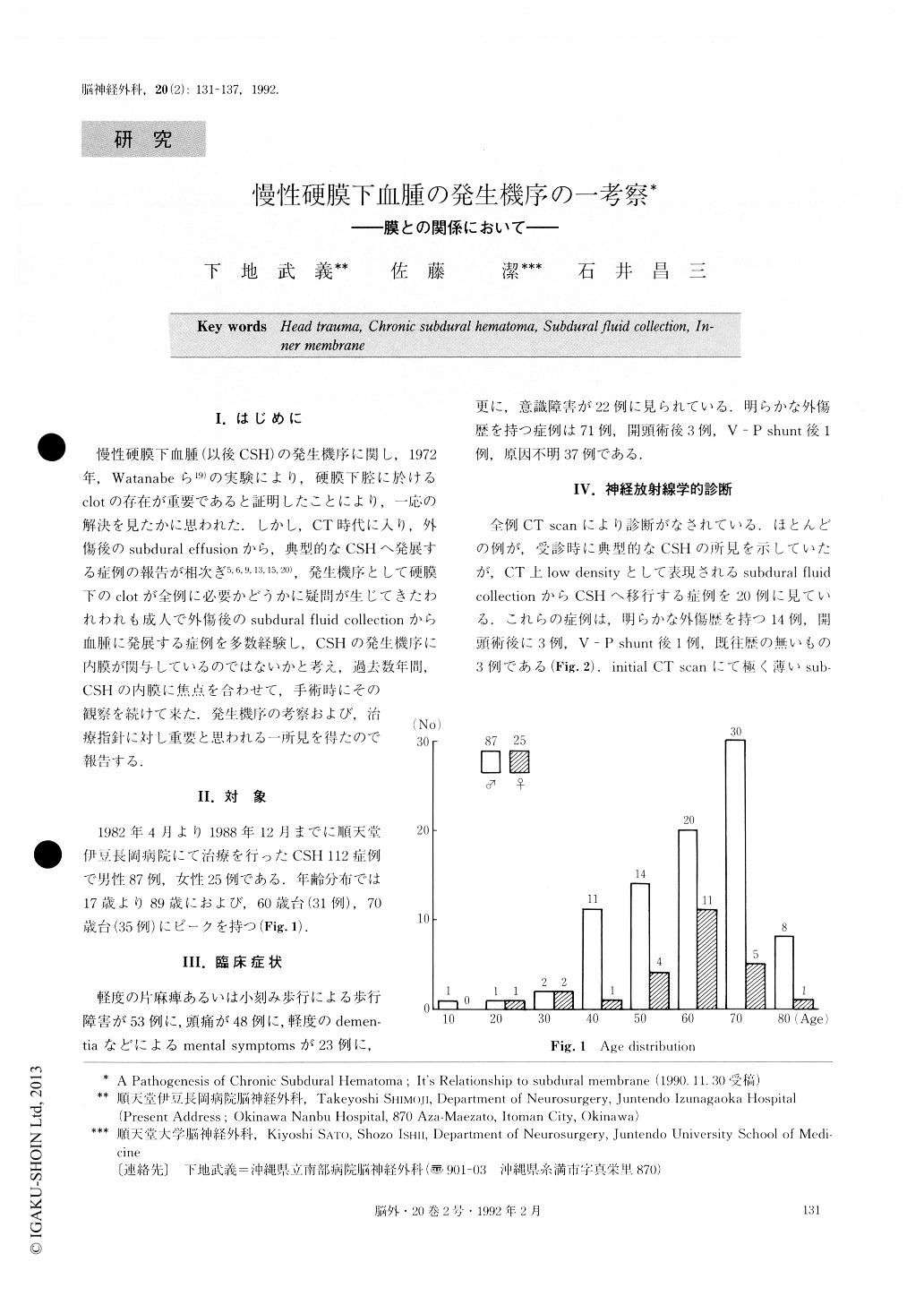Japanese
English
- 有料閲覧
- Abstract 文献概要
- 1ページ目 Look Inside
I.はじめに
慢性硬膜下血腫(以後CSH)の発生機序に関し,1972年,Watanabeら19)の実験により,硬膜下腔に於けるclotの存在が重要であると証明したことにより,一応の解決を見たかに思われた.しかし,CT時代に入り,外傷後のsubdural effusionから,典型的なCSHへ発展する症例の報告が相次ぎ5,6,9,13,15,20),発生機序として硬膜下のclotが全例に必要かどうかに疑問が生じてきたわれわれも成人で外傷後のsubdural fluid collectionから血腫に発展する症例を多数経験し,CSHの発生機序に内膜が関与しているのではないかと考え,過去数年間,CSHの内膜に焦点を合わせて,手術時にその観察を続けて来た.発生機序の考察および,治療指針に対し重要と思われる一所見を得たので報告する.
Our report concerns 112 cases of chronic subdural hematoma (CSH). M: F ratio is 3.5: 1. (Fig.1). The etiology of CSH is as follows; mild head injury (71 pts.), post-craniotomy (3 pts.) , post-V-P shunt (1 pt.) and unknown (37 pts.) . All patients are diagnosed by CT scan. Twenty patients were followed up after the subdural space was expressed as low density on CT (Fig. 2). 14 of these were found to have extremely thin subdural fluid collection without compression of the brain. Cisternography by using radioisotope and/or metrizamide was carried out in seven patients in whom the subdural fluid collection was found on CT, and in five of whom the dye flowing into the subdural space was retained for 24-48 hours (Fig.3 a). For treatment, burr holes and irrigation of the hematoma was carried out and then a drain was inserted into the subdural space. The inner membrane of the chronic subdural hematoma was looked at in 19 patients during surgery. All but one showed the inner membrane totally cover-ing the brain surface. However, in one patient the inner membrane didn't entirely cover the brain surface, sug-gesting that this was the condition just before the en-tire encapsulation of the hematoma (Fig. 4 b). It used to be considered that a blood clot in the sub-dural space is needed to develop a chronic subdural hematoma. However, since the introduction of CT scan, there have been many reports suggesting that chronic subdural hematoma has developed from subdural fluid collection without apparent evidence of blood clot after head injury.
Therefore, it has been controversial whether the blood clot is absolutely essential to develop into the chronic subdural hematoma or not. From our observation, it seems possible that some of CSHs may develop from the CSF fluid in the subdural space. This leakage of CSF can occur from any causes and this will create the outer membrane by reacting to the dura matter, followed by its extension into the brain surface as the inner membrane (Fig. 5).

Copyright © 1992, Igaku-Shoin Ltd. All rights reserved.


